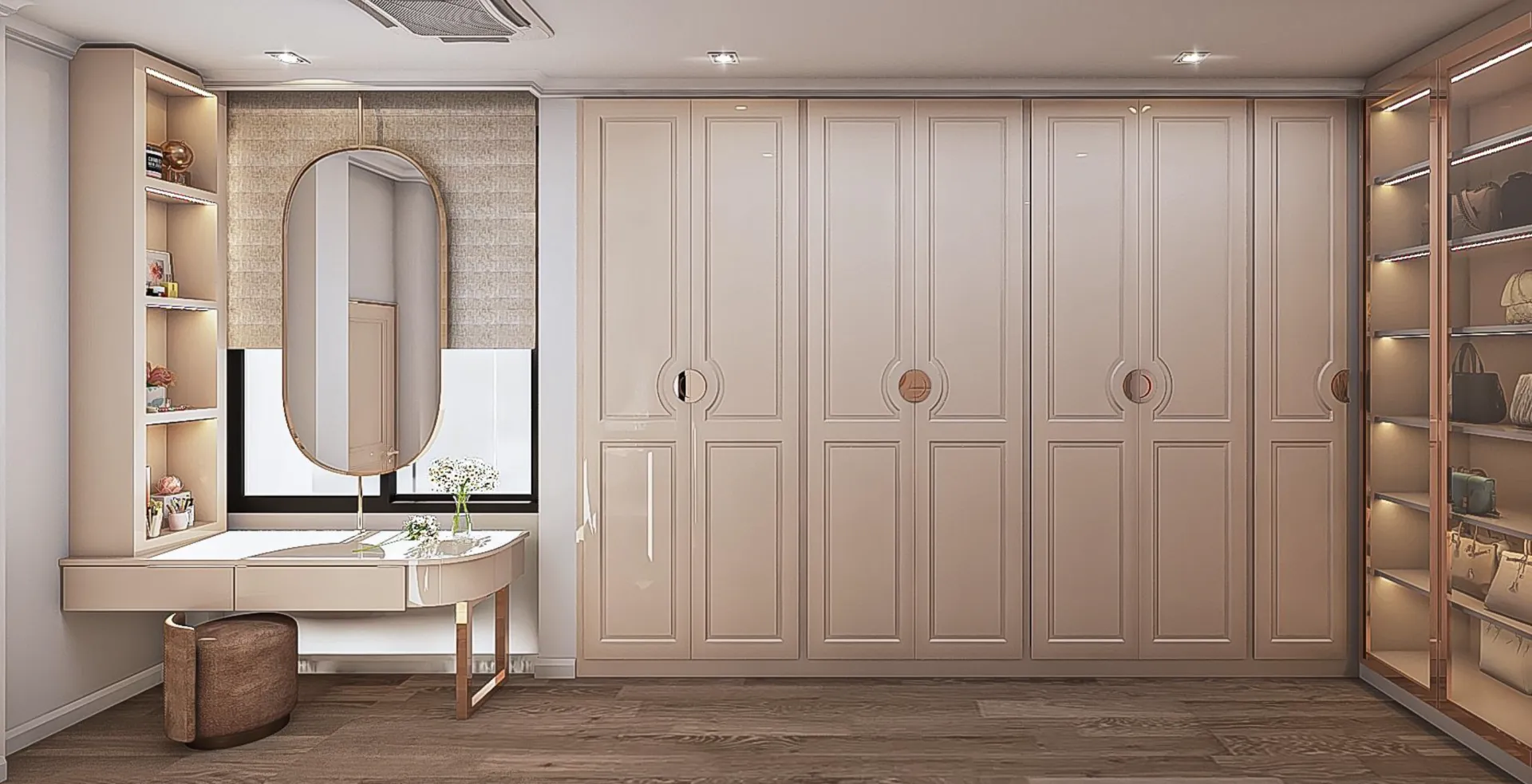Frame materials in built-in furniture (Built-in furniture) Built-in, built-in house, built-in condo, home decoration, interior decoration. Currently, there are many popular materials to choose from. The choice of materials may depend on the nature of the work or area, such as kitchen counters that must be resistant to moisture and have strength and stability, decorative walls, various cabinets, etc., including the owner’s preferences or budget for decoration, along with the properties of each type of material as a guideline for us to be able to choose to use it appropriately for the built-in work. Let’s see what types of wood are in each type of built-in work.
1. Particle Board
Particleboard is a wood made from wood chips and sawdust, bonded together by pressing with high pressure. “Particleboard” uses rubberwood, eucalyptus, wood chips, chopped into small pieces, mixed with glue and pressed into a wooden sheet. The wood is tough but not dense. The toughness comes from the interlocking fibers, the wood is fluffy and rough, not dense. There are small air holes in the wood, making the wood lighter than real wood. It is often used to make furniture or built-in furniture, but it is not suitable for painting. It is suitable for covering the surface with furniture surface materials.
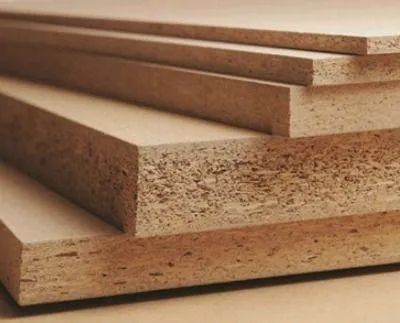
Properties:
Particleboard is a lightweight wood that is strong but less than other materials. Its price is not high, suitable for work that requires budget control. Wood expands easily if exposed to moisture. Particleboard is often used in woodwork used inside buildings. It is not suitable for work with high humidity.
Advantages:
Cheap, suitable for jobs that require budget control, can be sealed, has wood with similar characteristics throughout the piece, and is lightweight.
Disadvantages:
The wood itself expands easily if exposed to moisture. Not resistant to moisture, termites, wood-eating insects, short lifespan. The wood is not dense, so tightening screws often has problems with the screws becoming loose, such as when installing hinges or furniture accessories. Disadvantages are in terms of strength. Lifespan is much shorter than plywood.
2. MDF MDF
is a wood sheet made from sawdust from rubber wood and eucalyptus wood, which is crushed and compressed with a high-pressure wood press, along with heat, mixed with synthetic glue, and then compressed into sheets. This creates bonding between the fibers until they are one piece, with glue as a binder, and is denser than particleboard. It has a fine inner surface that is one piece throughout the sheet, and is smooth and consistent throughout the sheet. MDF can be painted for a smooth and beautiful finish.
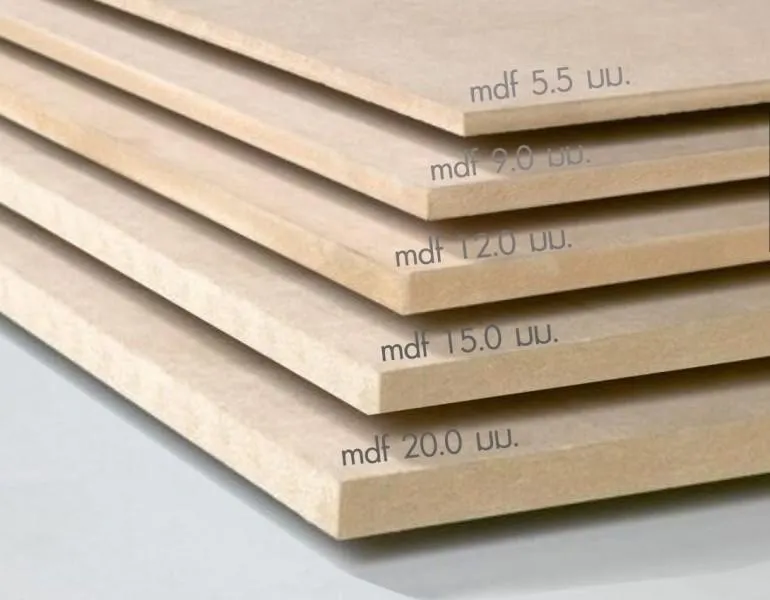
Properties:
Has a fine inner surface that is uniform throughout the entire sheet. Has density and smoothness throughout the entire sheet. Can be scraped to smooth the wood. The finished work looks neat and not flaky. Can be sprayed with paint for a smooth and beautiful finish. And is more water-resistant than particle board.
Advantages:
Wood has higher density than particle board. The surface is fine, smooth and consistent throughout the entire sheet. It is stronger and can support more weight than particle board. It can be painted smoothly and beautifully and is more water resistant than particle board.
Disadvantages:
It is more expensive and heavier than particle board because the wood is denser and not resistant to moisture.
3. HMR wood (most popular at present)
HMR is MDF wood mixed with moisture-resistant substances by taking eucalyptus wood pieces that are chopped and ground into fine fibers and pressed together with special glue, which can help increase resistance to expansion and warping. It is highly resistant to moisture and is very popular at present.
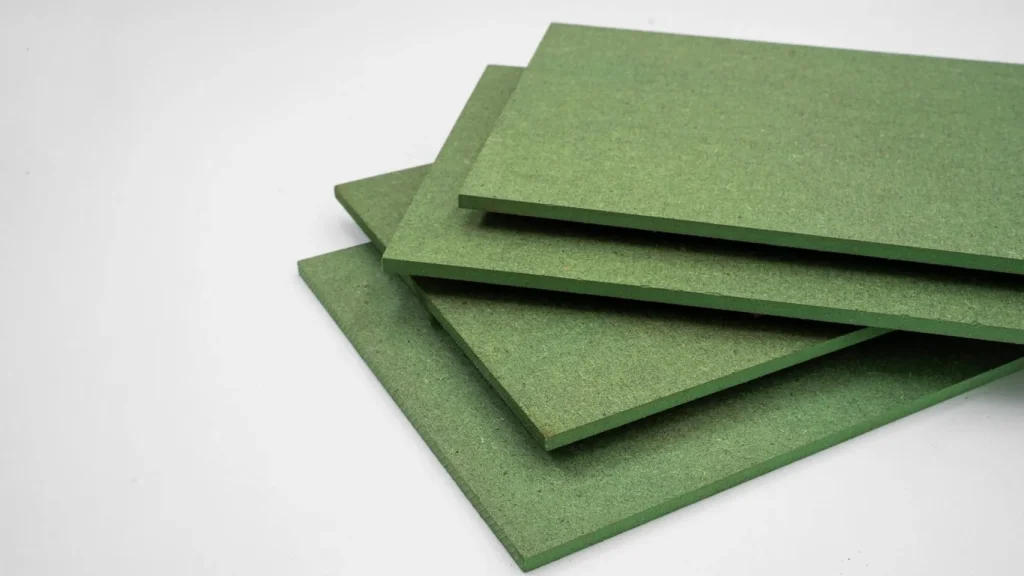
Properties:
Can be used in areas with high humidity, such as kitchens or bathrooms, cabinets under sinks, HMR wood is more economical than general plywood, is strong and durable, does not warp easily, and can support weight well.
Advantages:
Can be used in areas with high humidity, is strong and durable, does not bend easily, can bear weight well, the surface is smoother and more consistent than plywood, can be painted smoothly and beautifully, can be grooved into desired patterns, the wood will not crumble or become flaky, and is more economical than plywood, termites do not eat it.
Disadvantages:
It is more expensive and heavier than particle board because the wood is denser.
4. Real wood frame + plywood cover
Wood frame + plywood cover Built-in frames are real wood frames of various types, such as teak, neem, rubber wood, durian wood, etc., used as the main structure of the furniture by putting plywood together and covering the surface, spraying paint or staining with natural wood color. It is very strong and has tighter screws than other types of wood and can withstand humidity very well.

Properties
There are many types of wood frames sold in bundles. In the production process, termite-proofing is applied. In choosing wood frames, you can choose from the type and properties of that wood. For example, if you want wood that termites don’t eat, choose teak or teak joint. There are also many types of wood frames that are popularly used today, such as teak, neem, rubber wood, durian, tabeak, Siamese wood, mixed wood, etc. Although the production process has been treated with termite-proofing, furniture craftsmen usually apply termite-proofing to the wood frames again before use.
Advantages:
Can be used for various furniture making, high strength and long lasting, strong screw-tightness, light weight, can be selected according to the characteristics of the work, can withstand humidity very well.
Disadvantages:
Some types of wood frames may warp, some types of wood are quite expensive, such as teak, you must study carefully before choosing or consult an interior designer before choosing.
5. Real wood:
Built-in furniture made from real wood (Solid wood) is furniture produced from wood that has been processed from trees and then assembled into furniture. It has a natural beauty, is strong and durable, and can support weight well. Real wood work can choose the wood according to the type of use and preferences of the owner. There are many types of wood to choose from, such as teak, oak, ash, rosewood, etc. Some types of wood are quite expensive.
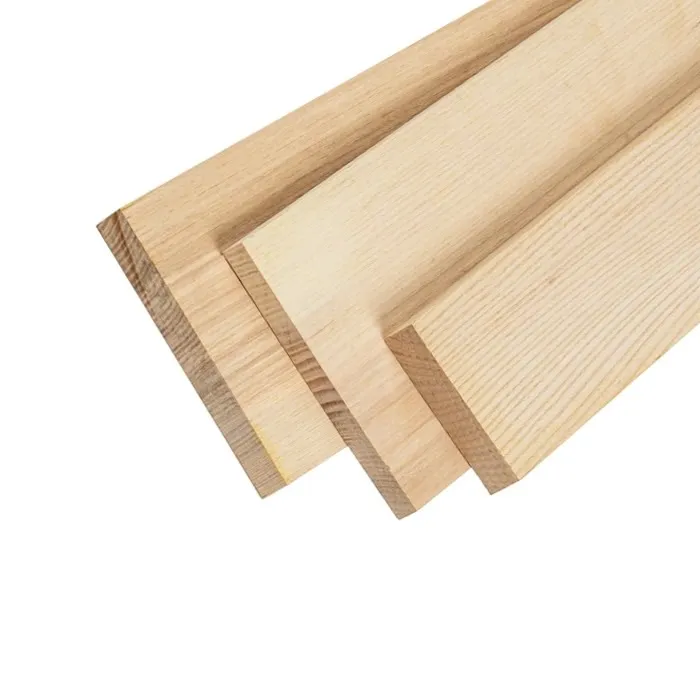
Features
Built-in furniture made from real wood is highly durable and long-lasting, has a natural beauty, can be planed and decorated, can choose wood according to the usage and preferences.
Advantages:
Some types of wood may have problems with termites and wood insects, wood may warp or bend due to weather conditions, and some types of wood are quite expensive.
From the types of wood used in interior decoration and built-in work above, we can assess the need to choose different types of wood that are appropriate for the type of work or preference. However, if you are still not sure about your decision, you can consult with an interior designer or interior decoration company that you choose.

